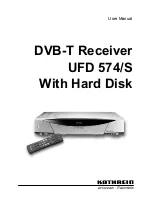
83
APPENDICES
●
CONTROL OPERATION
Most computers handle data in the form of “bits” and
“bytes”. A bit is the smallest piece of information that
the computer can handle. A byte is composed of eight
bits. This is the most convenient form for most
computer data. This data may be sent in the form of
either serial or parallel data strings. The parallel method
is faster but more complicated, while the serial method
is slower and requires less complicated equipment. The
serial form is, therefore, a less expensive alternative.
Serial data transmission uses time-division methods
over a single line. Using a single line also offers the
advantage of reducing the number of errors due to line
noise.
Only 3 lines are required theoretically for control of the
transceiver via the computer:
•
Transmit data
•
Receive data
•
Ground
From a practical standpoint, it is also necessary to
incorporate some means of controlling when this data
transfer will occur. The computer and transceiver
cannot be allowed to send data at the same time! The
required control is achieved by using the RTS and CTS
lines.
For example, the transceiver is placed into the transmit
mode whenever the character string “TX;” is sent from
the computer. The character string “TX;” is called a
command. It tells the transceiver to do something.
There are numerous commands available for control of
the transceiver. These commands may be incorporated
into a computer program written in any high level
language. Programming methods vary from computer
to computer; therefore, refer to the instruction manuals
provided with the terminal program and computer.
COMMANDS
A command is composed of 2 alphabetical characters,
various parameters, and the terminator to signal the end
of the command.
EXAMPLE:
Command to set VFO A to 7 MHz
COMMAND DESCRIPTION
A command may consist of either lower or upper case
alphabetical characters.
APPENDIX D: COM CONNECTOR
PROTOCOL
HARDWARE DESCRIPTION
The TS-870S uses a full-duplex, asynchronous, serial
interface for communicating through the male 9-pin
RS-232C
COM
connector. Bytes are constructed with
1 start bit, 8 data bits, and 1 stop bit (4800 bps can be
configured for 1 or 2 stop bits). No parity is used. The
pinout and the pin functions of the
COM
connector are
as shown below:
COM CONNECTOR
RXD:
The transmit data is the serial data transferred
from the transceiver to the computer. The output uses
negative logic.
TXD:
The receive data is the serial data transferred
from the computer to the transceiver. The input uses
negative logic.
GND:
This is the signal ground pin.
RTS:
This signal is applied to the transceiver. It is used
to inhibit transmit data from the transceiver when the
computer is not ready to receive the data. The input
uses positive logic. Inhibit is requested when the level
is low.
CTS:
This signal is applied from the transceiver. It is
used to inhibit transmit data from the computer when
the transceiver is not ready to receive the data. The
output uses positive logic. Transmit data is stopped
when the level is low.
FA 00007000000 ;
Command
Parameters
Terminator
1
2
3
4
5
6
7
8
9
—
Transmit data
Receive data
—
Signal ground
—
Receive enable
Transmit enable
—
—
Output
Input
—
—
Input
Output
—
COM
Pin No.
COM Pin Name
(Ref.: Computer)
Function
(Reference: TS-870S)
I/O
NC
RXD
TXD
NC
GND
NC
RTS
CTS
NC
TS-870S Rear panel view
1
2
3
4
5
9
8
7
6
Содержание TS-870S
Страница 104: ......
















































